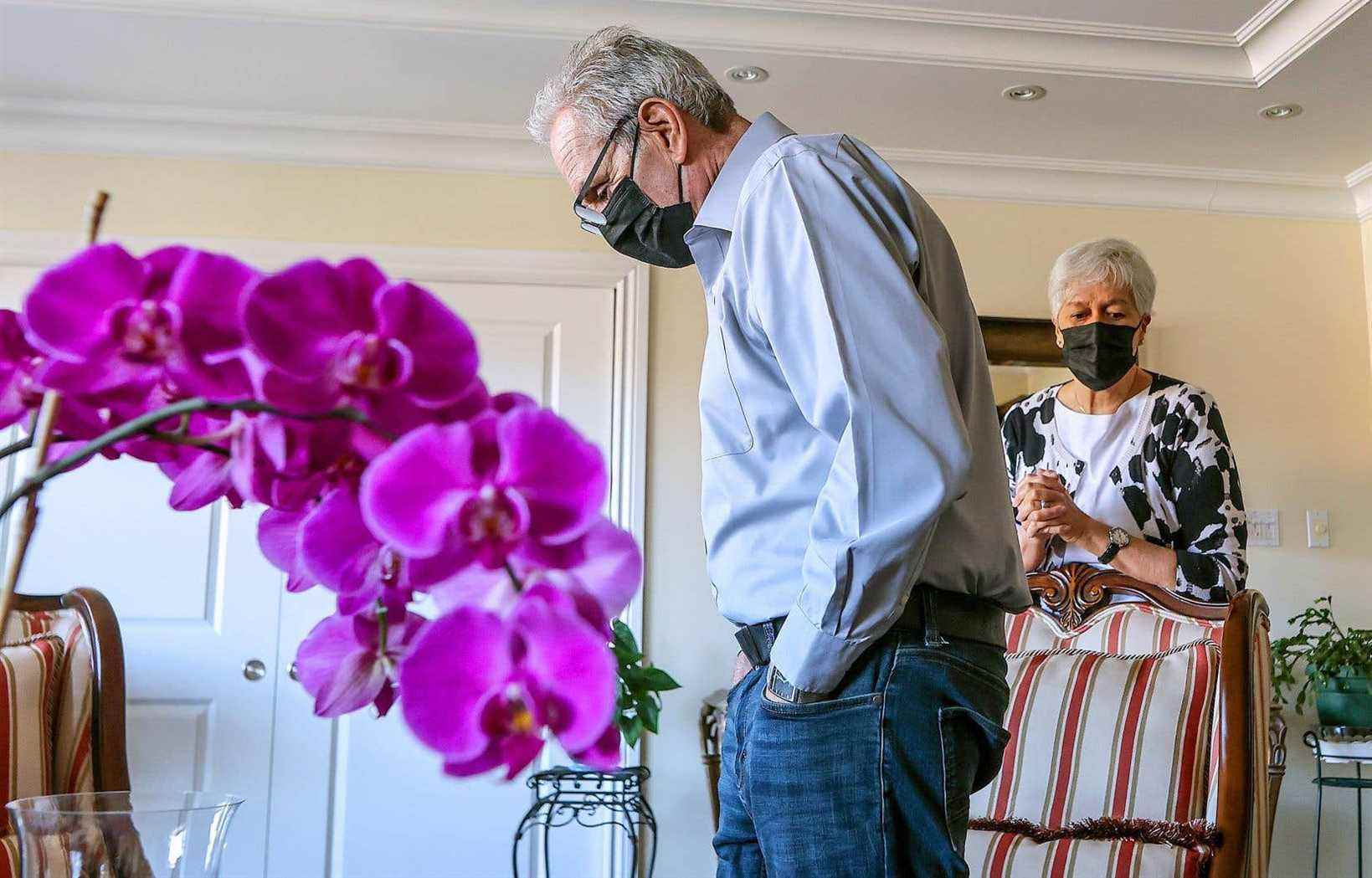The Jewish General Hospital of Montreal is expanding its home hospital program in order to relieve congestion in its emergency room and free up beds during the sixth wave. It offers patients with heart disease or health problems such as cellulitis (skin infection), pneumonia or chronic obstructive pulmonary disease to be treated in the comfort of their own home. A possibility so far reserved for patients with COVID-19.
This virtual inpatient unit was launched in the midst of the fifth wave, when the Jewish General Hospital was operating at maximum capacity and understaffed. In six weeks, 11 patients suffering from COVID-19 were monitored remotely.
The management of the hospital center now wants to accelerate the implementation of the program. Especially since the emergency is overflowing these days. The stretcher occupancy rate exceeded 200% during the passage of the To have to Monday.
“We have the objective of reaching five beds [dans notre unité virtuelle] over the next few weeks,” says Erin Cook, Deputy Director of the Department of Quality, Innovation, Evaluation, Performance and Ethics at the CIUSSS du Centre-Ouest-de-l’Île. -from Montreal.
The hospital at home is not for all patients. The patient’s state of health is the first factor taken into account. The patient must also be able to count on the help of a caregiver during his hospital stay at home. “An important criterion is consent,” adds Erin Cook. No one is forced to participate in the program, she stresses.
Those who get started receive tools to take their vital signs at home (e.g. blood pressure monitor, oximeter, chest sensor, etc.), in addition to a phone or iPad to send the data to the team. ‘Jewish General Hospital. A nurse monitors the patient’s condition in real time and contacts him several times a day. A home nurse can also provide care, such as intravenous treatments.
The attending physician performs his “virtual rounds” every day in the company of the nurse, the respiratory therapist and the pharmacist who follow his patients.
“We see the patient together by Teams, explains the Dr Lawrence Rudski, Director of the Azrieli Cardiovascular Center and Chief of Medical Information at the CIUSSS du Centre-Ouest-de-l’Île-de-Montréal. You can see [en direct] all vital signs and the patient can even be walked to see if he becomes short of breath or not. »
A conclusive experience
Larry Katz is one of the first patients to benefit from the expanded virtual hospital program. The 80-year-old Montrealer underwent triple coronary bypass surgery in February following a heart attack. Returning home after a stay within the walls of the Jewish General Hospital, he was readmitted three weeks later for arrhythmia. His doctor then ruled that further surgery was necessary. However, this could not take place until four days later. He had to remain hospitalized in the meantime.
“I said ‘no’,” says Larry Katz. It was out of the question for him to stay in a hospital room for the sole purpose of monitoring. His cardiologist then suggested that he participate in the hospital-at-home program. He liked the experience. “It’s much more comfortable at home than in the hospital,” said the gray-haired man, sitting in the living room of his residence in Westmount. And they could use the bed [que j’aurais occupé] for someone else. »
His wife, Carol Adams, credits home monitoring with helping her husband recover. He is also well, and walks an hour almost every day.
“It also allows the caregiver to save time doing other things while the patient rests comfortably at home,” says Carol Adams. However, this formula requires “discipline”, she points out, because the patient, even if he is at home, is still “in the hospital”.
Larry Katz soon found out. “Sometimes, by mistake, I forgot my phone somewhere in the house. I immediately received a call from the nurse. Maybe she thought I had run away,” he jokes. The couple say they have not experienced any bugs with the technologies used.
Benefits for all
The Dr Lawrence Rudski believes that hospitalization at home can be beneficial for patients. “Every day an elderly person stays in bed, it takes them three days to recover. The sooner he can be discharged, the sooner he can return to his normal life. Thanks to the program, the risks of deconditioning and exposure to infectious diseases are reduced.
The Jewish General Hospital also gains. The initiative ensures optimal use of personnel. “We’ve been able to get some human resources capacity with people who otherwise can’t come to work due to COVID restrictions,” says Erin Cook. These people are removed because they are pregnant or immunosuppressed. »
The home hospital also serves, and above all, to free up beds. The sinews of war during successive waves of COVID-19. “Having five patients in a virtual unit allows us to have five other beds available for other patients,” says Serge Cloutier, assistant director of the Nursing Department at the CIUSSS du Centre-Ouest-de-l’Île-de-l’Île. -Montreal.
Every bed counts in catching up on the backlog in surgery, underlines the Dr Lawrence Rudsky. The Jewish General Hospital is also considering integrating patients who have undergone hip or knee surgery into the virtual hospital program. Their recovery could take place at home, with the support, among others, of a home physiotherapist.
